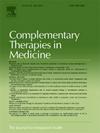Effect of acupressure on venous access procedural pain in children: A systematic review and meta-analysis
IF 3.5
3区 医学
Q1 INTEGRATIVE & COMPLEMENTARY MEDICINE
引用次数: 0
Abstract
Background
Effective pain management during venous access in children is a clinical priority, but evidence on acupressure remains inconclusive. This study aimed to evaluate the effectiveness of acupressure on venous access pain in children.
Methods
A comprehensive literature search was conducted across multiple electronic databases, including PubMed, Scopus, Web of Science, CENTRAL, ClinicalTrials.gov, and Google Scholar. Relevant studies were identified using a combination of keywords related to the research objective, covering all available records up to January 15, 2025. Randomized clinical trials (RCTs) comparing the effects of acupressure on pain intensity during catheter insertion and venipuncture in children versus a control group were included in the review.
Results
This systematic review and meta-analysis included eight studies with a total of 537 pediatric participants. The pooled analysis demonstrated that acupressure significantly reduced pain intensity during peripheral catheter insertion and venipuncture compared to the control group (SMD: −2.30; 95 % CI: −3.20 to −1.40; Z = 5.01, P < 0.001, I² = 93.6 %). Subgroup analysis further indicated that acupressure effectively decreased pain severity for both peripheral catheter insertion (SMD: −1.99; 95 % CI: −3.45 to −0.54) and venipuncture (SMD: −2.61; 95 % CI: −3.62 to −1.61), with statistically significant results.
Conclusions
Given that only two studies met high-quality criteria and the certainty of the overall evidence remains very low, the interpretation of findings should be approached with caution. To enhance the robustness of future evidence, there is a pressing need for rigorously designed randomized trials incorporating placebo control groups and proper allocation concealment.
穴位按压对儿童静脉通路程序性疼痛的影响:系统回顾和荟萃分析
背景:儿童静脉通路中有效的疼痛管理是临床优先考虑的问题,但穴位按压的证据仍不确定。本研究旨在评估指压治疗儿童静脉通路疼痛的有效性。方法在PubMed、Scopus、Web of Science、CENTRAL、ClinicalTrials.gov、谷歌Scholar等多个电子数据库进行综合文献检索。使用与研究目标相关的关键词组合识别相关研究,涵盖截至2025年1月15日的所有可用记录。随机临床试验(RCTs)比较了穴位按压对儿童导管插入和静脉穿刺期间疼痛强度的影响,并将其与对照组进行了比较。本系统综述和荟萃分析包括8项研究,共537名儿科参与者。合并分析表明,与对照组相比,穴位按压显著降低了外周导管插入和静脉穿刺时的疼痛强度(SMD:−2.30;95 % CI:−3.20 ~−1.40;Z = 5.01,P <; 0.001,I²= 93.6 %)。亚组分析进一步表明,穴位按压可有效降低两组外周置管患者的疼痛严重程度(SMD:−1.99;95 % CI:−3.45 ~−0.54)和静脉穿刺(SMD:−2.61;95 % CI:−3.62 ~−1.61),结果具有统计学意义。鉴于只有两项研究符合高质量标准,而且总体证据的确定性仍然很低,对研究结果的解释应谨慎对待。为了增强未来证据的稳健性,迫切需要严格设计随机试验,包括安慰剂对照组和适当的分配隐藏。
本文章由计算机程序翻译,如有差异,请以英文原文为准。
求助全文
约1分钟内获得全文
求助全文
来源期刊

Complementary therapies in medicine
医学-全科医学与补充医学
CiteScore
8.60
自引率
2.80%
发文量
101
审稿时长
112 days
期刊介绍:
Complementary Therapies in Medicine is an international, peer-reviewed journal that has considerable appeal to anyone who seeks objective and critical information on complementary therapies or who wishes to deepen their understanding of these approaches. It will be of particular interest to healthcare practitioners including family practitioners, complementary therapists, nurses, and physiotherapists; to academics including social scientists and CAM researchers; to healthcare managers; and to patients. Complementary Therapies in Medicine aims to publish valid, relevant and rigorous research and serious discussion articles with the main purpose of improving healthcare.
 求助内容:
求助内容: 应助结果提醒方式:
应助结果提醒方式:


